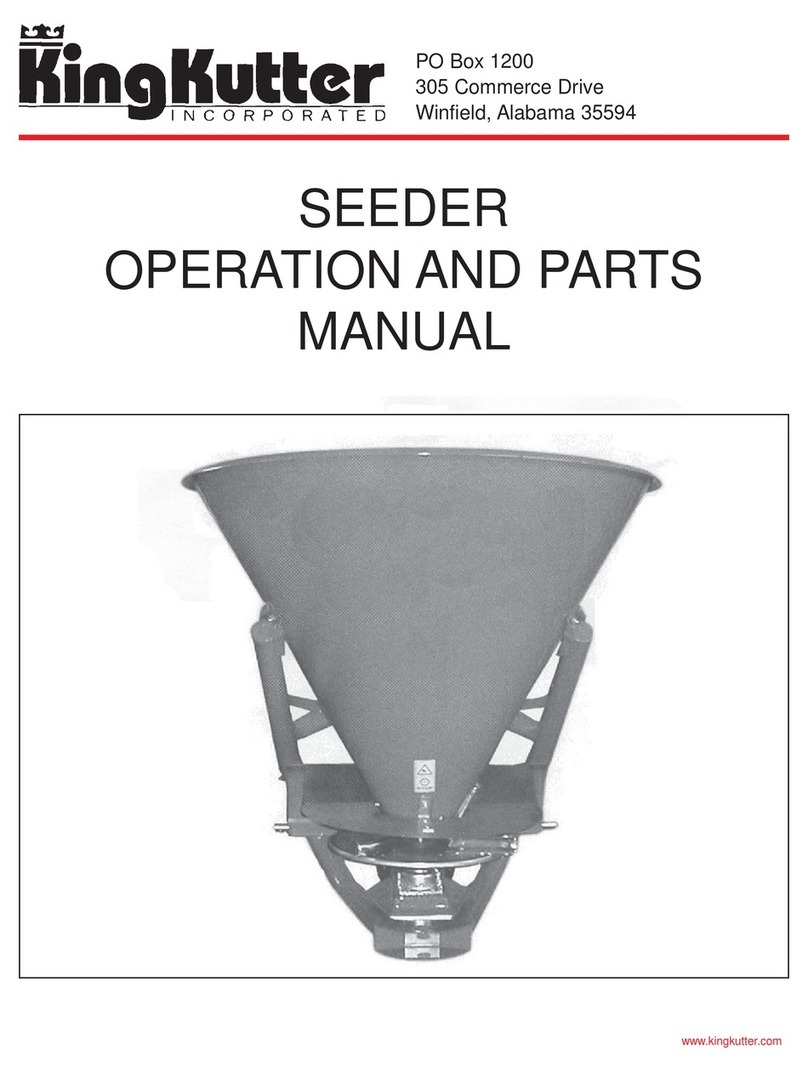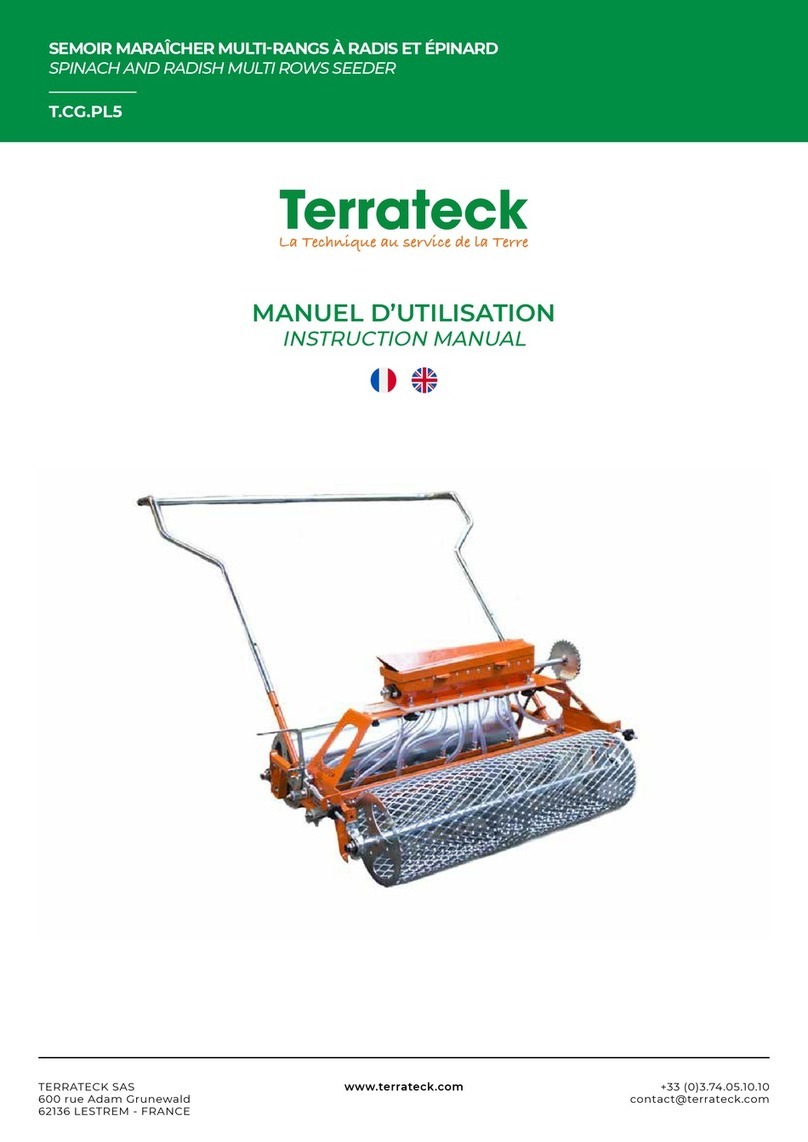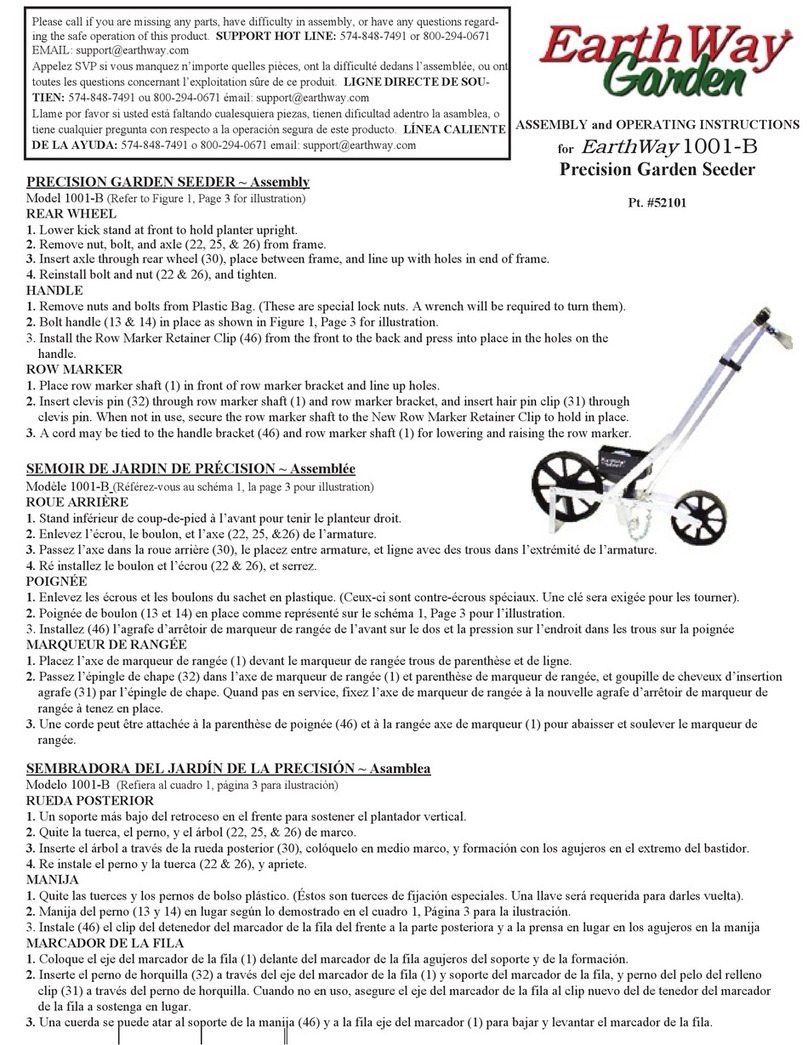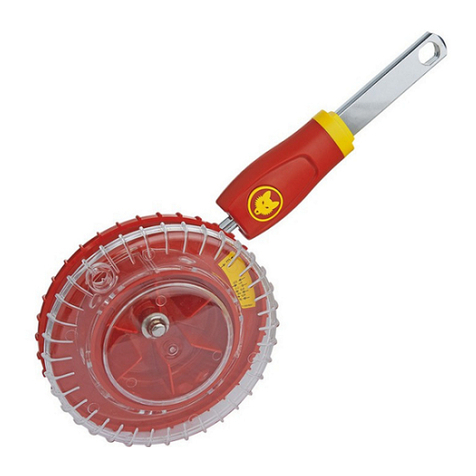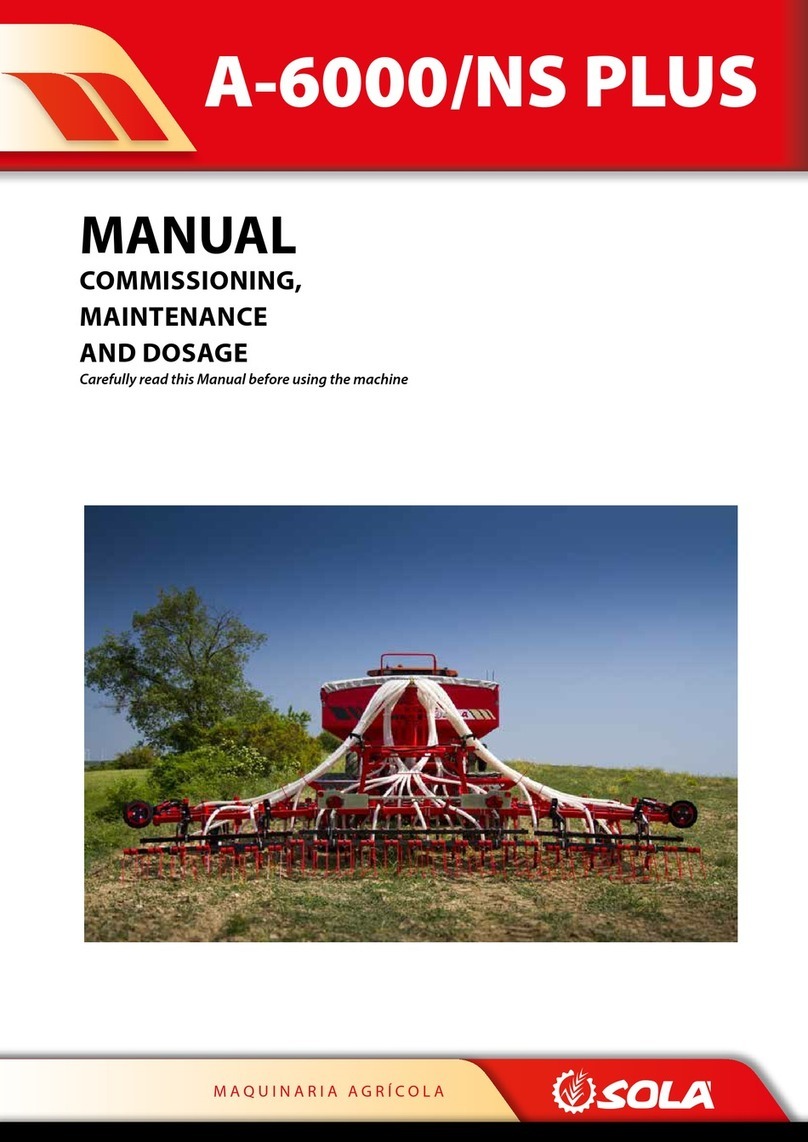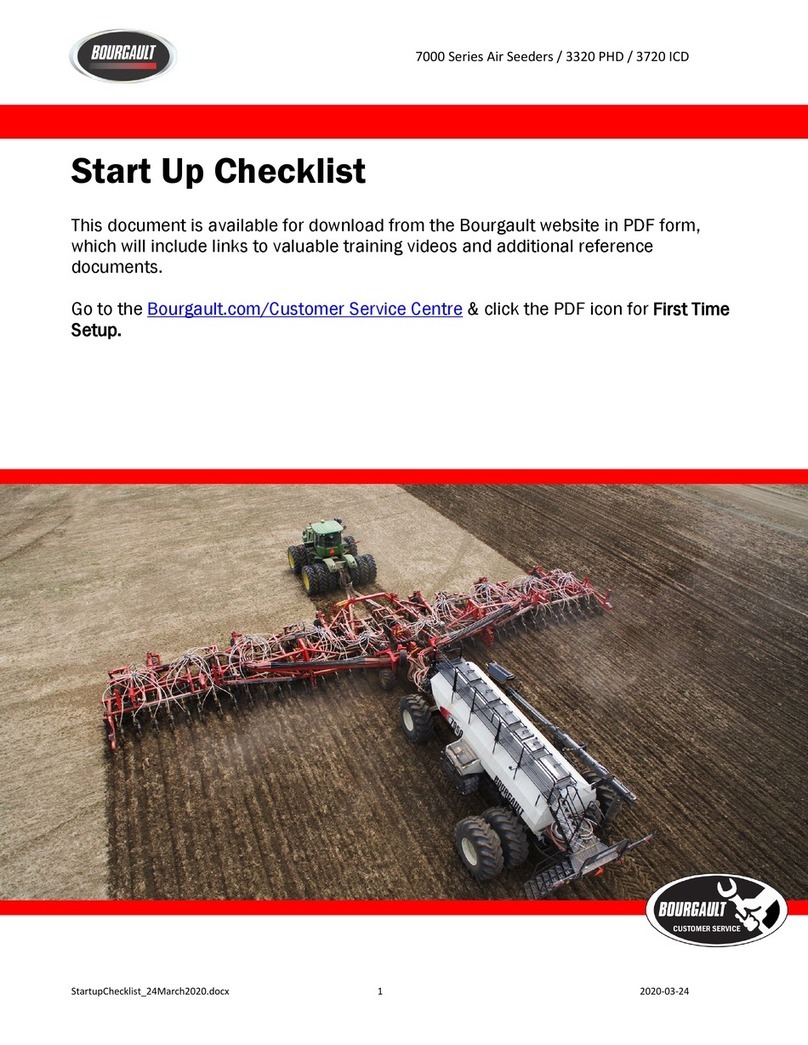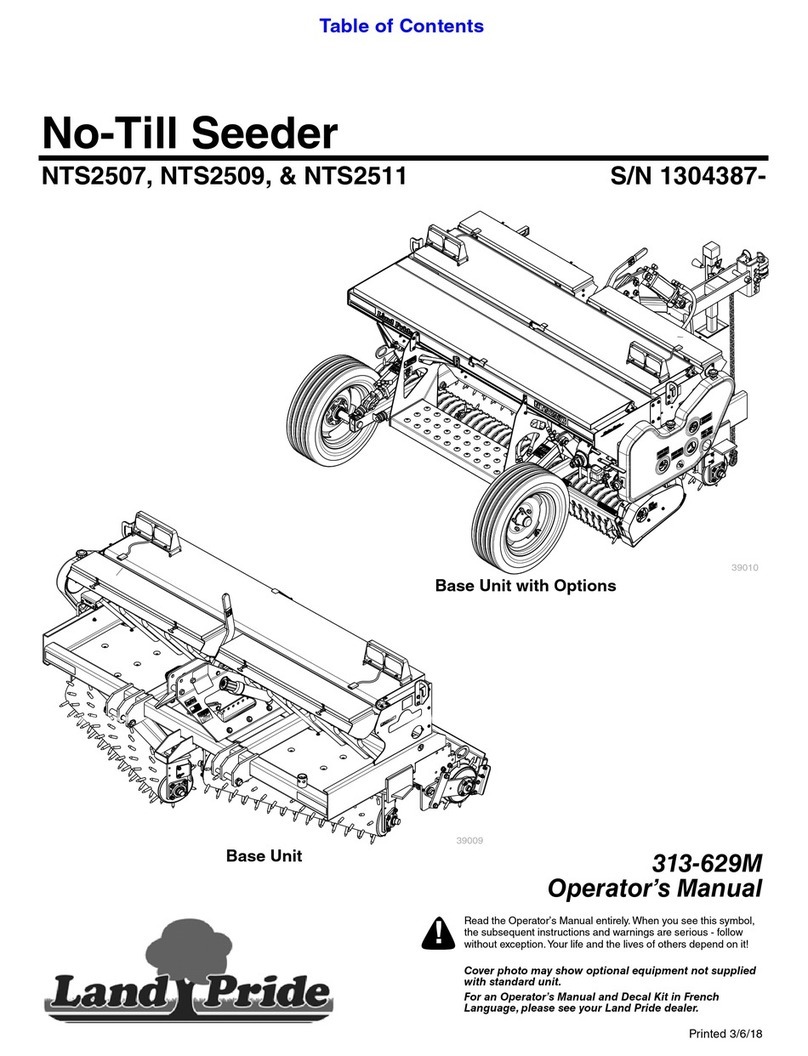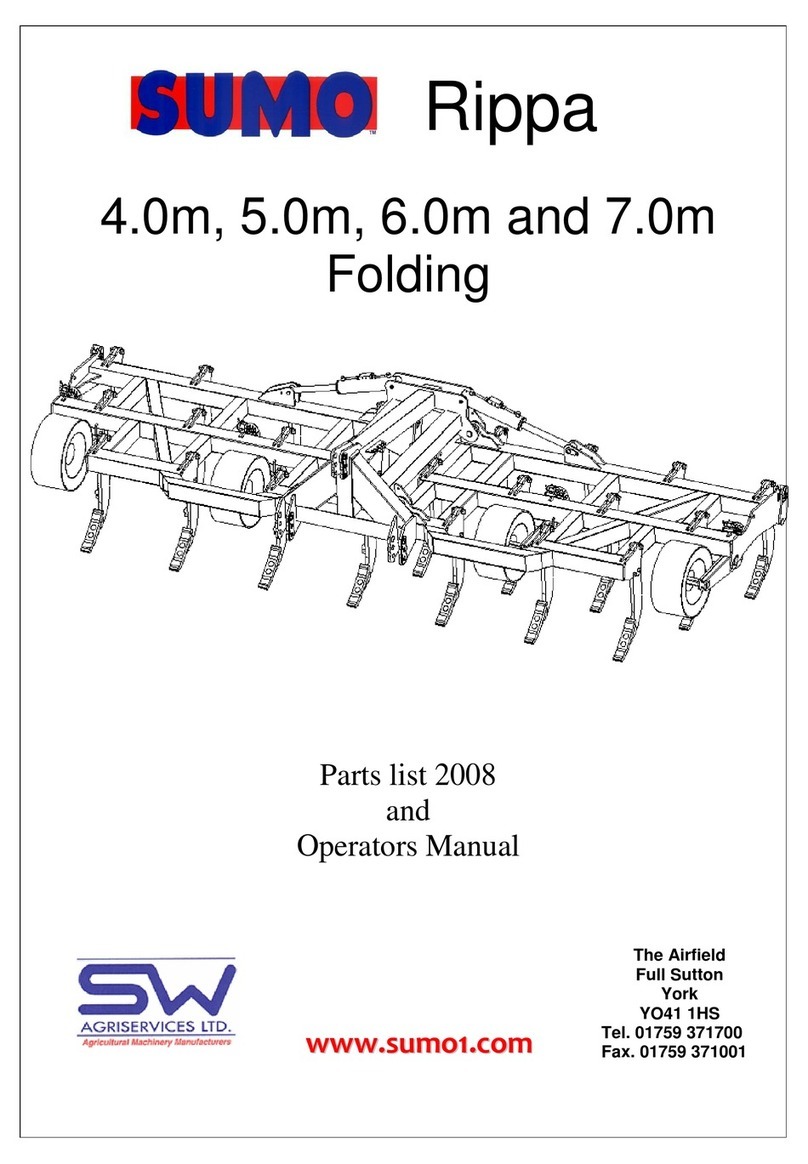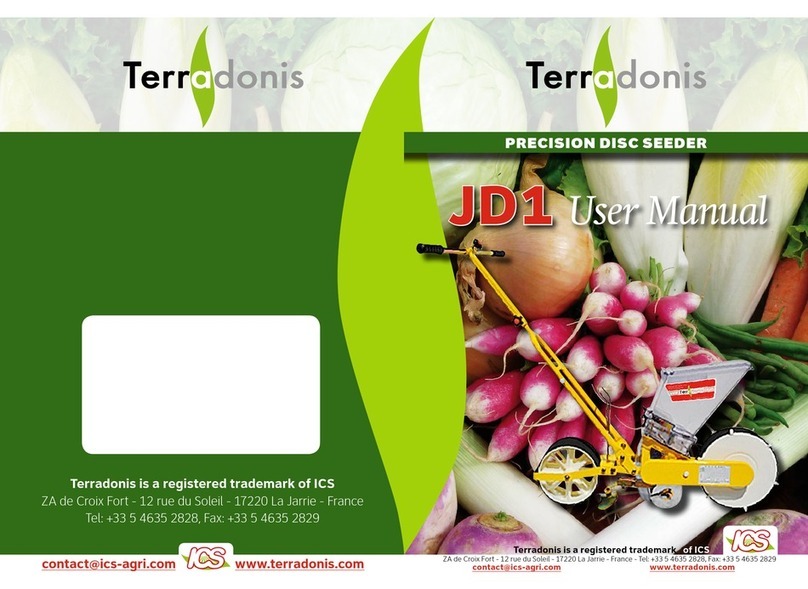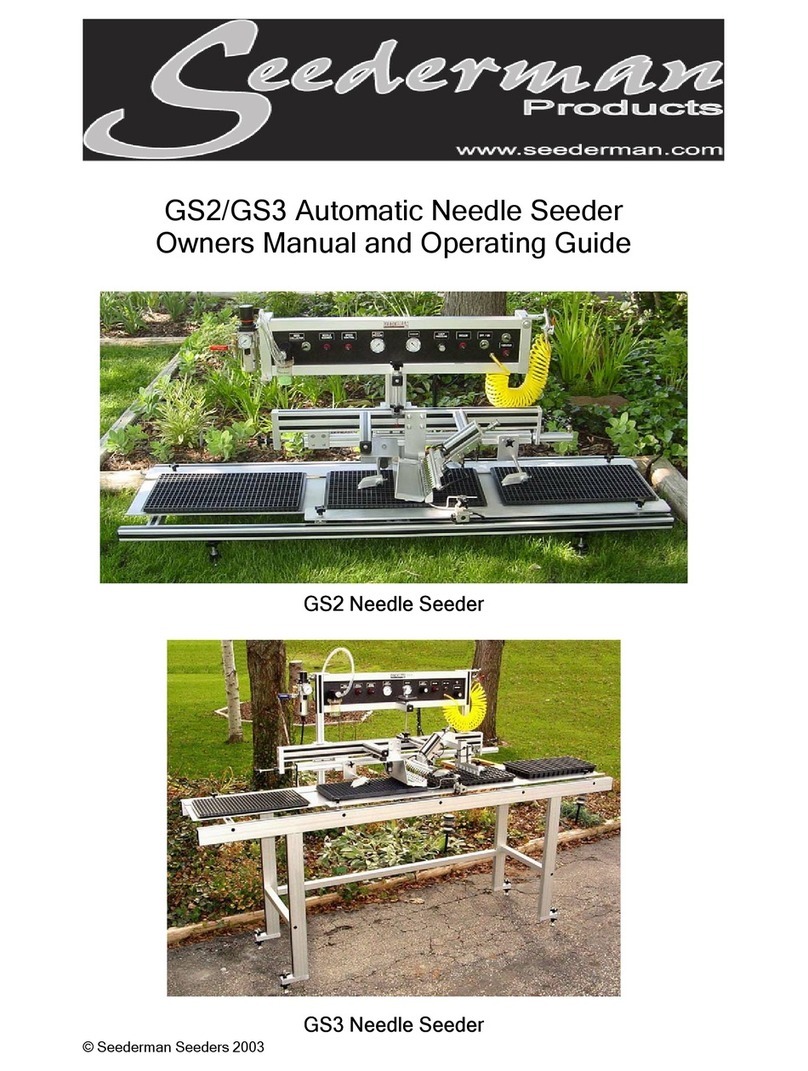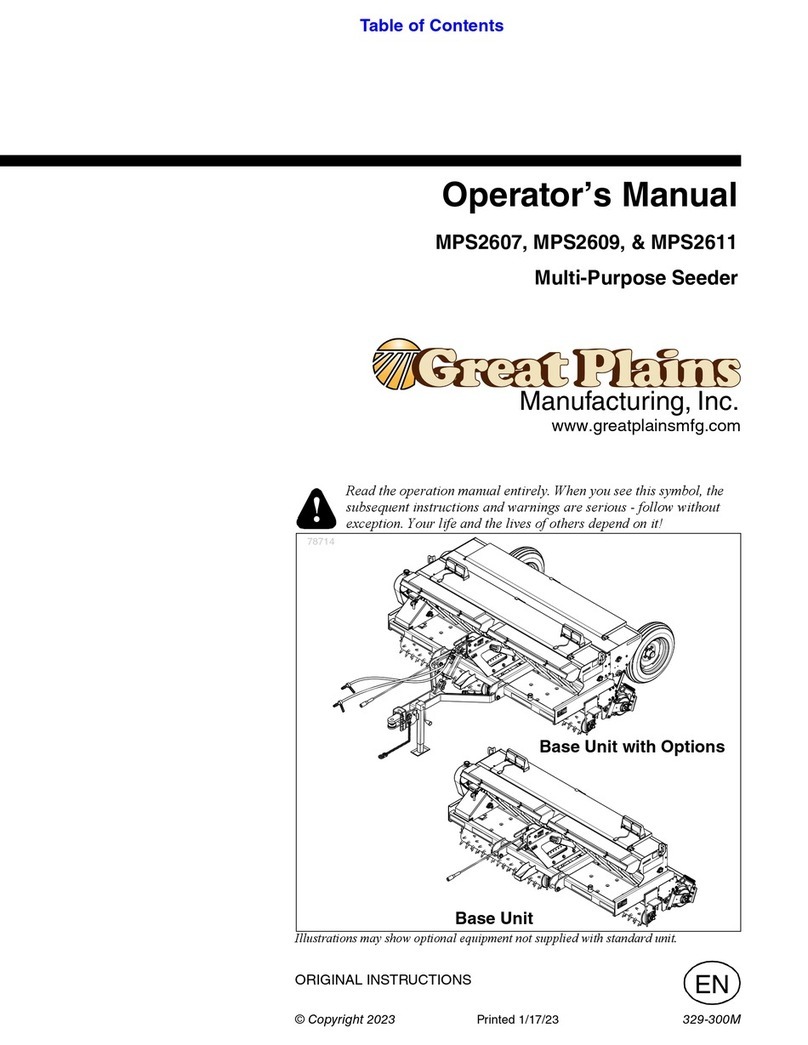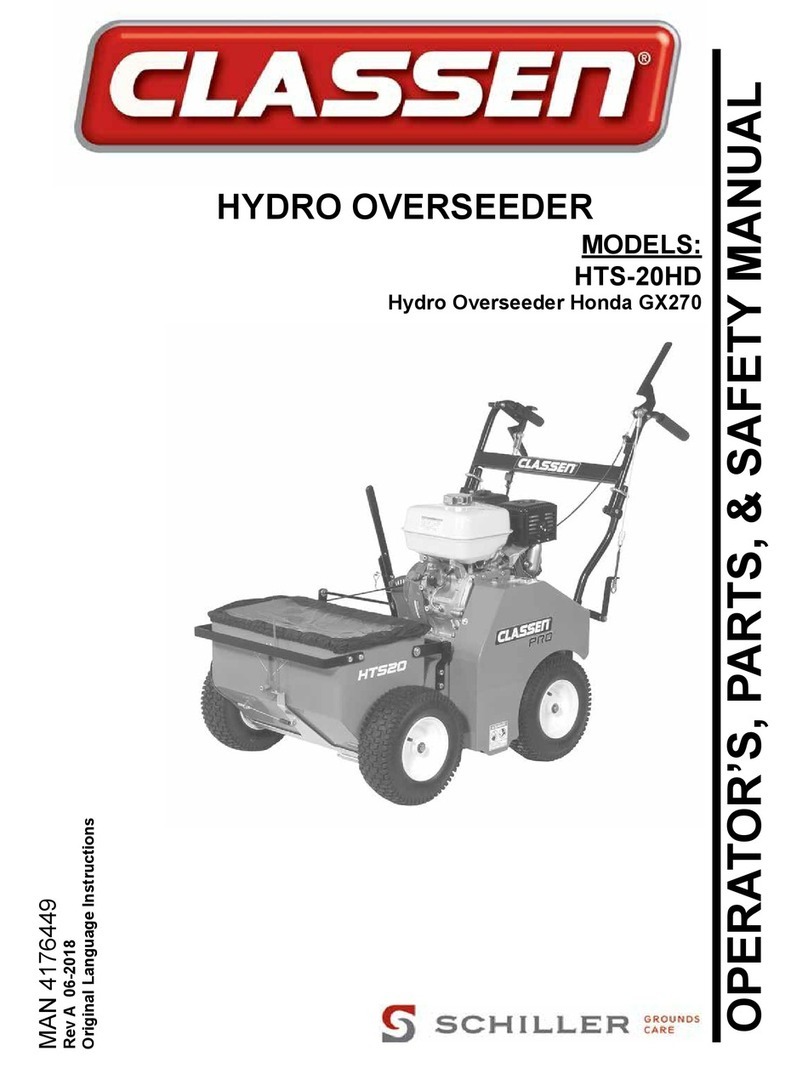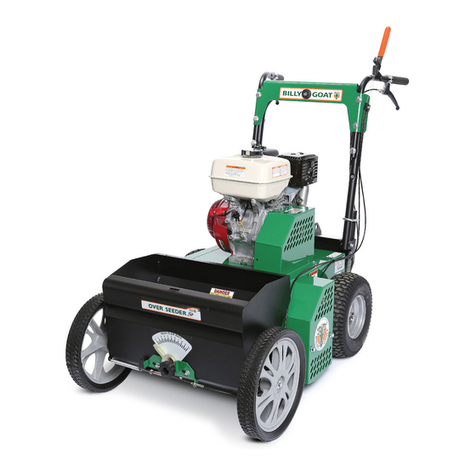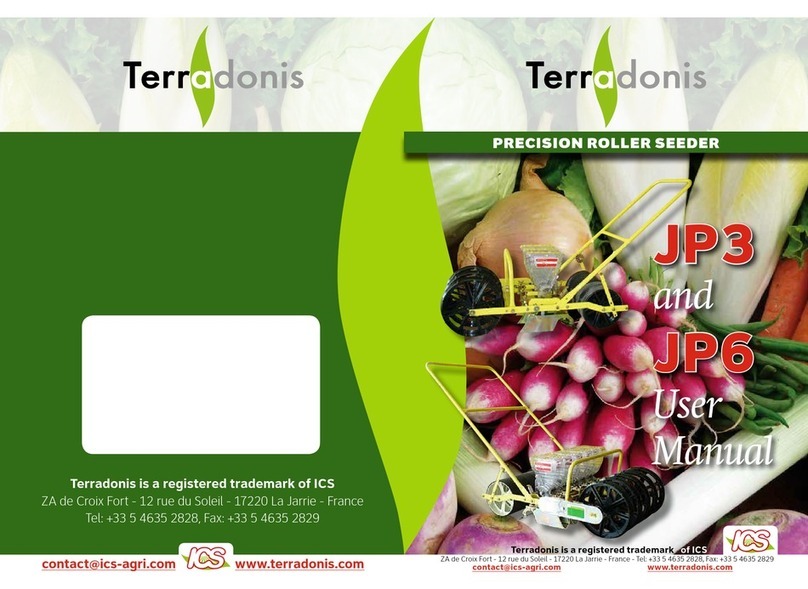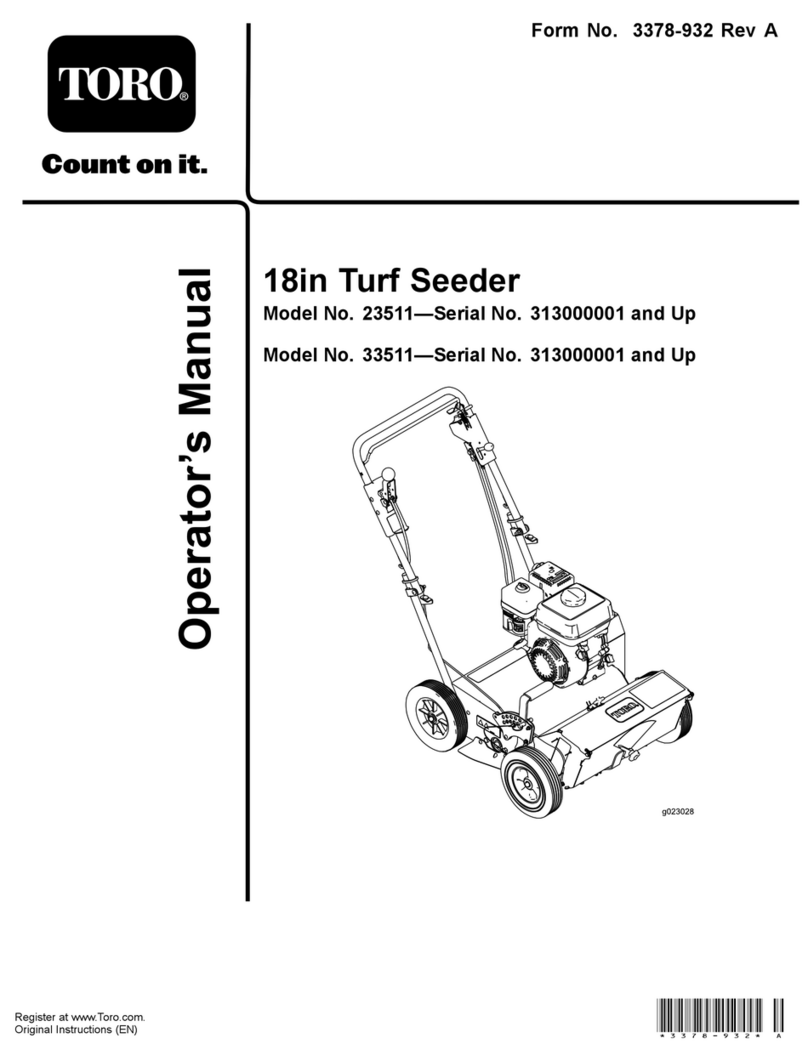HL_DZ-SUPERcompact_10-2017_03_EN 10
Together with every overseeder 2 supports are enclosed. (See picture 1 no 1). When disconnecting the ma-
chine from the tractor, and parked, always the supports have to be placed in good order to prevent the
overseeder from tipping. Once the overseeder is hanging behind the tractor, the supports can be fitted to
the head in the existing conduits.
Moving the overseeder is done safe and easy in the 3-point hitch of a tractor. If such is
not ready for use, transport is possible by use of a correct chain linked to the top-link of
the overseeder, as indicated by a safety sticker near the mounting point.
For moving the machine all national and local safety regulations have to be respected,
take in account the weight of the seeder. Machine weight is to be found in chapter 5
“technical data”.
Before mounting, demounting, repair, service or other works to the applicator always stop the driving (trac-
tor) engine. Fit the supports to the frame and lock them with the safety pins or set the 3-point linkage in
lowest position or block it by props or hang it by chains or hoisting belt or fit the cylinder blocks when this
concerns the towed machine.
Before setting in operation again, check carefully if all fastenings are fitted properly and no tools or persons
exist on or between the machine; remove all blockages.
Take care that when attaching the tractor is positioned straight in line with the seeder, with the threepoint
hitch down. Before lifting the linkage to pull the balls into the claws of the lift arms, always first fasten the
top linker between vehicle and applicator. In case the linkage should lift up to much, than there is less risk
that the applicator will fall down because the top linker will hold it to prevent an accident.
Take care that the applicator is fixed properly in the linkage of the pulling vehicle. The safety hooks of the
claws must fit properly around the balls and the top linker has to be fastened.
In a towed machine, checks must be carried out to ensure that the drawbar eye is properly secured around
the hitch pin and that this is properly secured to prevent it from slipping off.
To enable hydraulic lifting and lowering of the towed machine, a double-action hydraulic valve is required
on the tractor with a closed central position. The quick-detachable couplings that are used are 1/2" Male
(Vredo no. A829.22).
In order to electrically power the machine we advise placing a 3-P coupling socket (to be ordered under no.
A453.91) at the pulling vehicle with a separate feed which is secured with ±5A. You can also feed the ma-
chine through the lighting. There is a coupling socket at the lighting connector. In this case the lighting has
to be switched on for the machine to work correctly and the lighting has to be secured more heavily.
3.1.1. Functions of the control handles
1. Bottom flap handle (photo 3 no. 1 & 2)
With the bottom flap handle the position of the bottom flap can be adjusted in
respect to the camwheel. The adjustment of this handle depends on the seed-
size.
When sowing e.g. standard Ryegrass it should be in smallest position. For
larger seeds according to the size of the seed the handle can be adjusted into
another 3 positions. It can also be “opened up” to empty the seed hopper.
ATTENTION! Only close the bottom flap when the seed hopper is empty.
